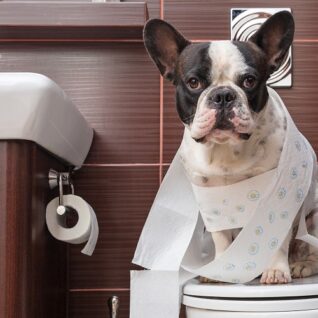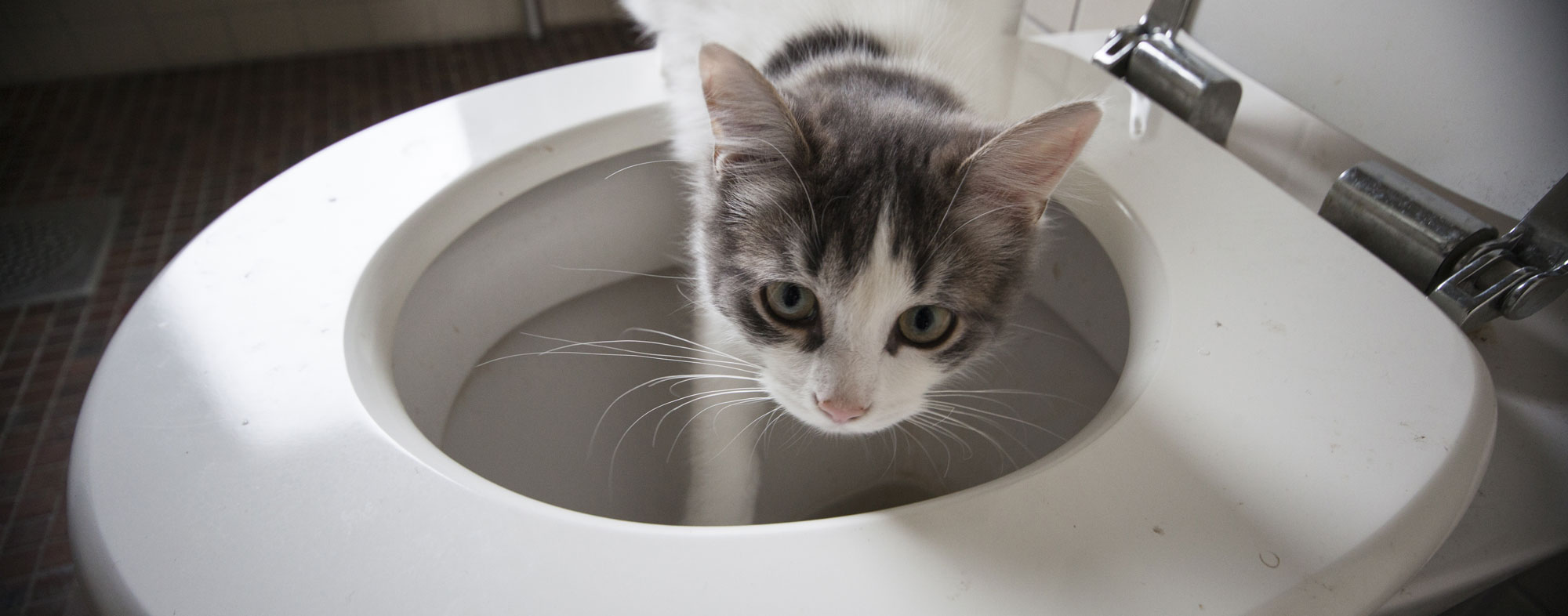This great article which follows in relation to Can You Flush Dog and Cat Poo Down the Toilet? is exceptionally intriguing. You should check this stuff out.

When it involves dealing with waste, specifically animal waste, many individuals usually consider the practical option of flushing it down the toilet. Nonetheless, this seemingly simple solution can have severe effects for the environment and public health. In this article, we'll discover why flushing pet waste down the bathroom is a poor concept and supply alternative techniques for correct disposal.
Introduction
Appropriate garbage disposal is vital for maintaining environmental sustainability and public health. While it may seem safe to purge animal waste down the commode, it can bring about numerous concerns, both for the environment and human health.
Dangers of flushing animal waste
Ecological impact
Flushing pet waste introduces damaging germs and microorganisms into waterways, which can adversely impact water communities. These microorganisms can pollute water sources and harm aquatic life, interfering with delicate communities.
Public health concerns
Pet waste consists of damaging bacteria such as E. coli and Salmonella, which can posture severe health dangers to human beings. Flushing animal waste down the bathroom can pollute water products, causing the spread of diseases and infections.
Alternatives to flushing
As opposed to flushing pet waste down the toilet, there are numerous alternate disposal approaches that are more environmentally friendly and sanitary.
Composting
Composting animal waste is an eco-friendly method to take care of it. By composting, organic matter is broken down into nutrient-rich soil, which can be utilized to feed yards and plants.
Landfill disposal
Taking care of animal waste in a land fill is one more option. While not as environmentally friendly as composting, it is a safer choice to flushing, as it avoids the contamination of water resources.
Animal waste disposal systems
There are specific pet garbage disposal systems available that safely and hygienically dispose of animal waste. These systems often utilize enzymes to break down waste and eliminate smells.
Actions to proper animal waste disposal
To guarantee correct disposal of pet waste, adhere to these actions:
Scooping and getting waste
Regularly scoop and bag animal waste using eco-friendly bags. This protects against waste from infecting the atmosphere.
Using designated waste bins
Dispose of bagged animal waste in designated waste bins, such as compost bins or land fill containers. Prevent flushing it down the bathroom whatsoever costs.
Cleaning can and pet dog locations consistently
On a regular basis clean litter boxes and animal locations to avoid the buildup of waste and microorganisms. Usage pet-safe cleaning items to maintain health.
Benefits of correct disposal techniques
Embracing correct disposal techniques for pet waste provides numerous benefits:
Lowered environmental pollution
Proper disposal techniques reduce the danger of environmental pollution, safeguarding rivers and communities from contamination
Lessened threat of water contamination.
By avoiding flushing pet waste down the commode, the threat of water contamination is considerably decreased, safeguarding public health.
Improved sanitation and hygiene
Proper disposal methods promote better sanitation and hygiene, creating a safer atmosphere for both read more people and animals.
Conclusion
In conclusion, purging pet waste down the bathroom is damaging to the environment and public health. By adopting different disposal techniques and adhering to appropriate waste monitoring practices, we can lessen the unfavorable impact of animal waste and contribute to a cleaner, healthier earth.
What To Do With Dog Poo – The Do's And Don'ts Of Disposing Of Faeces
Dog poo bins
Some councils provide dedicated dog waste bins in popular dog-walking areas that can take dog poo that has been bagged but you can legally dispose of dog waste in any public litter bin, as long as it is securely bagged. This also applies to your wheelie bin at home.
Do not flush
Water companies do not recommend flushing dog faeces down the toilet because certain parasites can survive the water processing treatment and are potentially harmful to humans. You should also never consider flushing dog poo that has been bagged down the toilet as the bags will not break down and instead create severe blockages in the sewage system.
In the woods
The Forestry Commission promotes a ‘stick and flick’ method for dealing with waste in the woods. This means finding a stick and using it to flick any poo from off the path so that it is out of the way of other walkers. You could also bury it as long as it is not in an area where there might be livestock.
Livestock
Parasites found in dog poo can be transmitted to livestock if they inadvertently eat infected faeces that has been left on grazing land. This could result in the death of sheep or abortion in cattle so you should always make sure you pick up your dog’s waste in fields where livestock could be present.

On a regular basis clean litter boxes and animal locations to avoid the buildup of waste and microorganisms. Usage pet-safe cleaning items to maintain health.
Benefits of correct disposal techniques
Embracing correct disposal techniques for pet waste provides numerous benefits:
Lowered environmental pollution
Proper disposal techniques reduce the danger of environmental pollution, safeguarding rivers and communities from contamination
Lessened threat of water contamination.
By avoiding flushing pet waste down the commode, the threat of water contamination is considerably decreased, safeguarding public health.
Improved sanitation and hygiene
Proper disposal methods promote better sanitation and hygiene, creating a safer atmosphere for both read more people and animals.
Conclusion
In conclusion, purging pet waste down the bathroom is damaging to the environment and public health. By adopting different disposal techniques and adhering to appropriate waste monitoring practices, we can lessen the unfavorable impact of animal waste and contribute to a cleaner, healthier earth.
What To Do With Dog Poo – The Do's And Don'ts Of Disposing Of Faeces
Dog poo bins
Some councils provide dedicated dog waste bins in popular dog-walking areas that can take dog poo that has been bagged but you can legally dispose of dog waste in any public litter bin, as long as it is securely bagged. This also applies to your wheelie bin at home.
Do not flush
Water companies do not recommend flushing dog faeces down the toilet because certain parasites can survive the water processing treatment and are potentially harmful to humans. You should also never consider flushing dog poo that has been bagged down the toilet as the bags will not break down and instead create severe blockages in the sewage system.
In the woods
The Forestry Commission promotes a ‘stick and flick’ method for dealing with waste in the woods. This means finding a stick and using it to flick any poo from off the path so that it is out of the way of other walkers. You could also bury it as long as it is not in an area where there might be livestock.
Livestock
Parasites found in dog poo can be transmitted to livestock if they inadvertently eat infected faeces that has been left on grazing land. This could result in the death of sheep or abortion in cattle so you should always make sure you pick up your dog’s waste in fields where livestock could be present.

Do you appreciate reading up on ? Write a short review further down. We'd be happy to find out your responses about this blog entry. We hope that you come back again in the future. Are you aware of anybody else who is looking into the topic? Why not share it. We value reading our article about 10 Things You Should Never Flush Down The Toilet.
Click Here